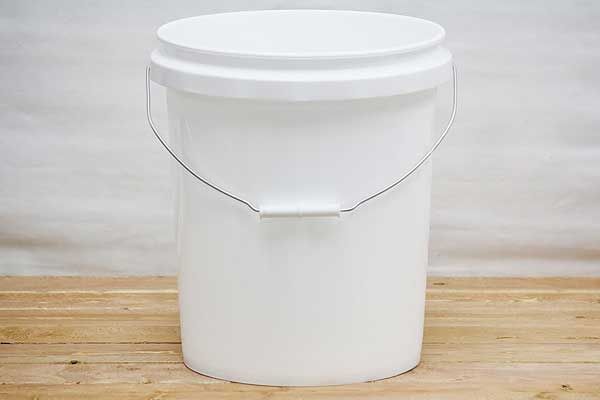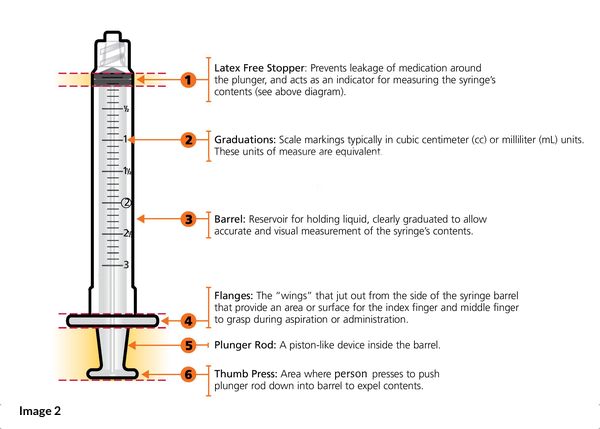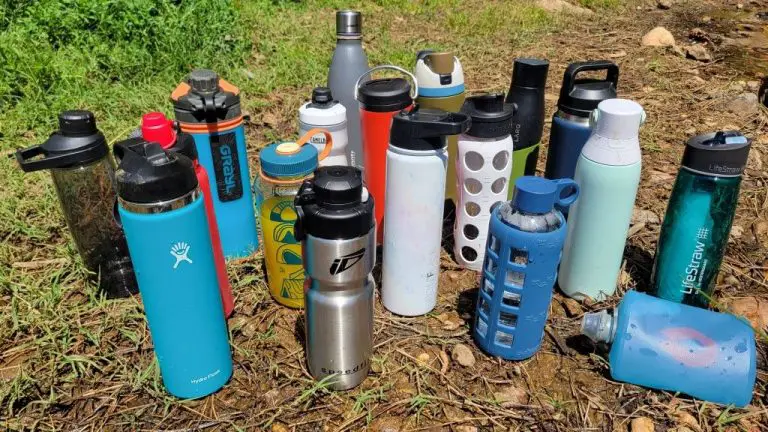What Size Is A 5 Gallon Bucket?
The 5 gallon bucket is a ubiquitous container used for a variety of purposes. First patented in 1886, the modern 5 gallon bucket has become a staple in households, businesses, and industries around the world. This article will provide a comprehensive overview of what defines a 5 gallon bucket, including its standard dimensions, volume, common uses, construction materials, lid options, and accessories. We’ll also briefly touch on alternate bucket sizes for comparison.
Definition of a 5 Gallon Bucket
A 5 gallon bucket refers to a bucket that has a volume or capacity of 5 gallons. The gallon is a unit of measurement for volume in both the US customary system and the British imperial system. One gallon is equal to approximately 3.79 liters. Therefore, a 5 gallon bucket has a volume of around 18.9 liters.
The term “5 gallon bucket” indicates the total capacity of the bucket, not necessarily how much it actually holds. A standard 5 gallon bucket is designed to be able to fully contain 5 gallons of liquid if filled to the brim. However, for practical use, these buckets are not normally filled completely full. There is often some empty space at the top when the lid is attached.
5 gallon buckets are a popular standard size because 5 gallons is a convenient volume for many common household, commercial, and industrial uses. From paints and solvents, to compost and yard waste, to bottled water and emergency supplies, the 5 gallon bucket can efficiently store a useful quantity.
Standard Dimensions
The standard dimensions of a 5 gallon bucket will vary slightly depending on whether it is made of plastic or metal and the shape of the lid/top. However, most 5 gallon buckets conform to the following general specifications:
For plastic 5 gallon buckets with an open top:
- Height: 14 11/16 inches (37.3 cm)
- Top Opening Diameter: 12 1⁄4 inches (31.1 cm)
- Bottom Base Diameter: 10 11/16 inches (27.1 cm)
For plastic 5 gallon buckets with a closed lid:
- Height: 14 3/8 inches (36.5 cm)
- Top Lid Diameter: 12 1⁄4 inches (31.1 cm)
- Bottom Base Diameter: 10 11/16 inches (27.1 cm)
For metal 5 gallon buckets:
- Height: 14 to 16 inches (35.6 to 40.6 cm)
- Top Opening Diameter: 12 to 12 1⁄4 inches (30.5 to 31.1 cm)
- Bottom Base Diameter: 10 to 12 inches (25.4 to 30.5 cm)
So in summary, most 5 gallon buckets range from 14 to 16 inches tall, with a top opening diameter of around 12 to 12 1⁄4 inches, and a base diameter of 10 to 12 inches.
Sources:
https://bascousa.com/blog/what-are-the-dimensions-of-a-5-gallon-bucket-height-weight-and-capacity
https://bascousa.com/blog/5-gallon-bucket-dimensions—height-weight-capacity-and-faq
Volume of a 5 Gallon Bucket
A 5 gallon bucket has a volume of approximately 18.9 liters. According to Ask Numbers, the exact conversion is that 5 US gallons equals 18.9270589 liters. This is because one US gallon is equal to 3.785 liters. So by multiplying 5 gallons by 3.785 liters per gallon, you get 18.9270589 liters. The metric system is based on units of 10, so it’s helpful to round this 18.9270589 liters to about 18.9 liters when converting between the imperial and metric systems. This provides a good approximation to remember that a common 5 gallon bucket holds around 18.9 liters in volume.
Common Uses

5 gallon buckets have a wide range of common uses due to their durable and versatile nature. Here are some of the most popular ways people utilize these buckets:
- Storing paint or other liquids – The standard 5 gallon bucket size is perfect for holding a few gallons of paint for home projects. The lid helps keep the paint fresh between uses. Paint stores often sell paint in 5 gallon buckets.
- Catching drips – Placing a 5 gallon bucket underneath leaky pipes, air conditioners, cars, or other objects helps neatly catch the drips instead of making a mess. The buckets are easy to empty when full.
- Emergency water storage – Filling clean 5 gallon buckets with water is recommended for emergency preparedness. The water stored this way will remain drinkable for a long time. Rotate buckets out periodically.
- Compost collection – Drilling holes in the bottom of a 5 gallon bucket creates an excellent container to collect food scraps for composting. The scraps can then be easily transported outside to a compost pile.
- DIY pet feeder – 5 gallon buckets can be transformed into gravity-fed pet feeders. Cut a hole in the bottom and fill with pet food. Pets can access food as needed but the bucket controls against overeating.
- Mop bucket – The size and shape of a 5 gallon bucket works perfectly for soaking and wringing out mops. The attached handle provides an easy way to transport water.
With sturdy construction and just the right capacity, it’s no wonder 5 gallon buckets are a staple in many homes and garages for general storage and use. Their versatility ensures they continue to be useful for years to come.
Plastic vs Metal
When choosing between plastic and metal 5 gallon buckets, there are some key differences to consider in terms of weight, durability, cost, and usage:
Plastic buckets are lighter, typically weighing 2-3 lbs while empty compared to metal buckets which can weigh up to 5 lbs. Plastic is also less expensive, with a 5 gallon plastic bucket costing around $5 while metal buckets can cost $20-30. However, metal buckets are more durable for heavy duty use. According to Bascousa, steel pails tend to be heavier and more durable compared to plastic.
Metal buckets can last for decades, while plastic buckets may get brittle and crack over time. Plastic also has some risk of leaching chemicals into the contents, while stainless steel buckets are inert. For food use, metal or food-grade plastic buckets are recommended.
Plastic buckets can be more customizable, available in a variety of colors, while metal buckets are limited to natural metals colors like silver, black, or galvanized. Plastic lids also tend to form a tighter seal than metal bucket lids.
For heavy loads, caustic chemicals, or high heat applications, metal buckets are the way to go. But for general purposes, plastic buckets offer good durability at lower cost.
Lids
Lids are an important consideration when purchasing 5 gallon buckets. The most common lid options include:
Snap-on lids – These are plastic lids that securely snap into place on the lip of the bucket. Snap-on lids provide a tight seal and are convenient for quick access. However, they can pop off if dropped.
Screw-on lids – Screw-on lids thread onto the bucket opening and provide a very secure, leak-proof seal. They are ideal for storing liquids or stackable items. Screw-on lids take longer to remove than snap-on.
Gasket seals – Some lids contain a rubber gasket that compresses when tightened to create an airtight seal. The gasket helps prevent leaks and is useful for long-term storage.
Locking lids – These heavy-duty lids have a latch that locks the lid in place for added security when transporting or stacking buckets.
Vented lids – If the buckets will contain fumes or odors, vented lids allow gases to escape while keeping contents in place.
Consider factors like security, stacking, and contents when choosing the right lid for your 5 gallon bucket needs.
Accessories
A 5 gallon bucket is very versatile, but accessories can make it even more useful. Here are some handy accessories to consider:
- Bucket handle – Makes carrying a full 5 gallon bucket much easier by giving you a grip point.
- Bucket caddy – Holds multiple buckets and allows you to wheel them around like a cart.
- Bucket holder – Attaches to ladders, scaffolds, and more to hold a bucket in place.
- Bucket roller – Roller base allows you to roll a heavy 5 gallon bucket instead of lifting.
With the right accessories, a basic 5 gallon bucket can be customized for specialized tasks. From painting to gardening and more, accessories help maximize a 5 gallon bucket’s utility.
Alternate Sizes
5 gallon buckets are a common standard size, but buckets come in a variety of other sizes as well including:
- 2 gallon buckets – Smaller buckets useful for lighter materials or smaller quantities. A 2 gallon bucket is about 10.2 inches tall with a 10.8 inch diameter (US Plastic).
- 3 gallon buckets – Slightly larger than 2 gallons but still easy to carry and transport. A 3 gallon bucket is about 11 inches tall with an 11.4 inch diameter (US Plastic).
- 7 gallon buckets – Larger capacity for bigger jobs or heavier materials. A 7 gallon bucket is about 14 inches tall with a 13.4 inch diameter (US Plastic).
- 55 gallon drums – Very large cylindrical containers used for bulk transport and storage. 55 gallon drums are about 35 inches tall with a 22.5 inch diameter (US Plastic).
There are also many bucket sizes in between like 3.5 gallons or 15 gallons. The optimal size depends on the intended use and amount of material that needs to be stored or transported.
Conclusion
In summary, the standard 5 gallon bucket has dimensions of around 12-15 inches tall and 10-12 inches wide. The volume of a 5 gallon bucket is typically around 5 US gallons or 18.9 liters. These versatile buckets have many uses – from storing paint, chemicals, and food, to being used as makeshift seats or drums. Key factors when selecting a 5 gallon bucket include the material (plastic or metal), lid style, and any accessories needed for the intended use. While exact dimensions can vary slightly, a 5 gallon bucket remains a commonly used and highly practical item in businesses and households. This overview covers the key details about size, volume, uses, and options when it comes to 5 gallon buckets.


